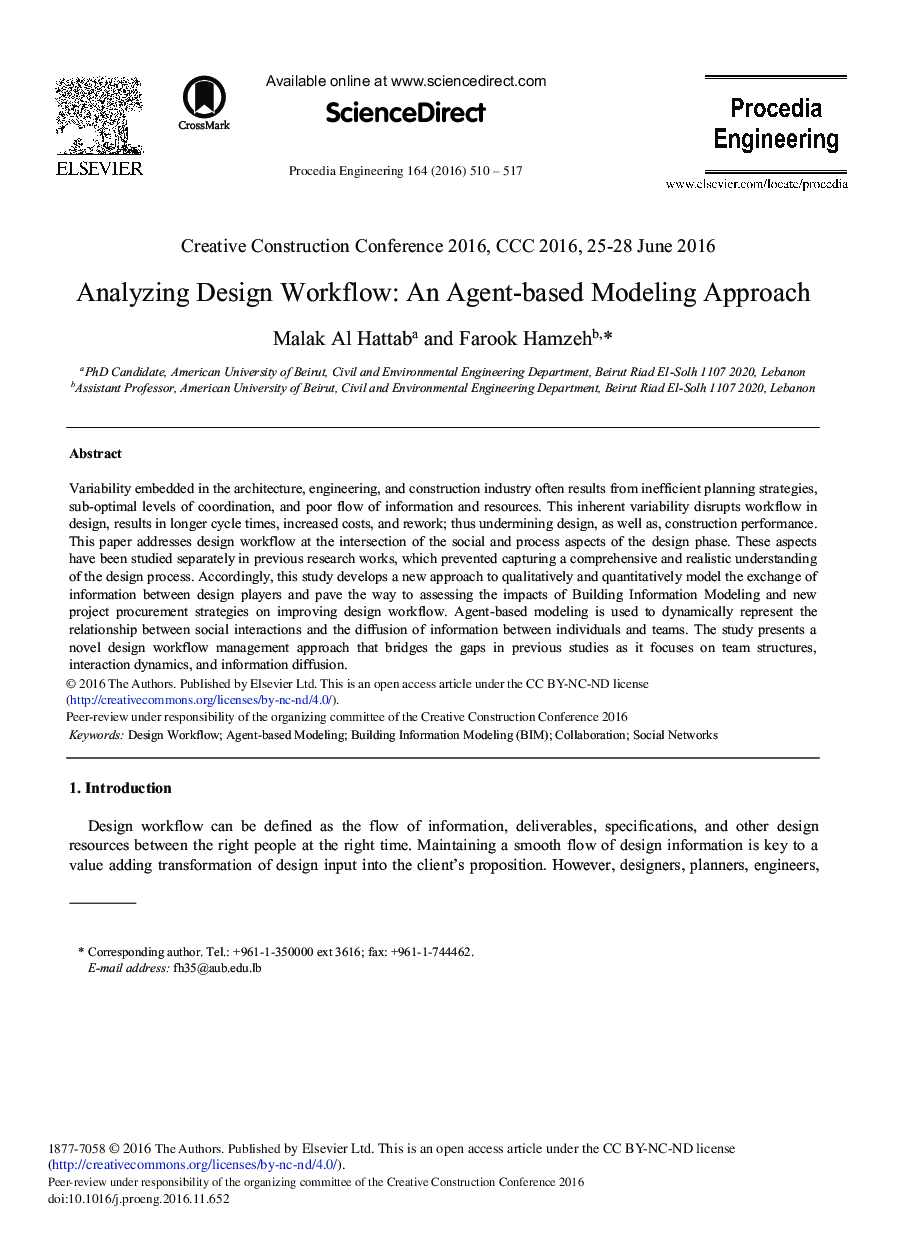| Article ID | Journal | Published Year | Pages | File Type |
|---|---|---|---|---|
| 5029515 | Procedia Engineering | 2016 | 8 Pages |
Variability embedded in the architecture, engineering, and construction industry often results from inefficient planning strategies, sub-optimal levels of coordination, and poor flow of information and resources. This inherent variability disrupts workflow in design, results in longer cycle times, increased costs, and rework; thus undermining design, as well as, construction performance. This paper addresses design workflow at the intersection of the social and process aspects of the design phase. These aspects have been studied separately in previous research works, which prevented capturing a comprehensive and realistic understanding of the design process. Accordingly, this study develops a new approach to qualitatively and quantitatively model the exchange of information between design players and pave the way to assessing the impacts of Building Information Modeling and new project procurement strategies on improving design workflow. Agent-based modeling is used to dynamically represent the relationship between social interactions and the diffusion of information between individuals and teams. The study presents a novel design workflow management approach that bridges the gaps in previous studies as it focuses on team structures, interaction dynamics, and information diffusion.
